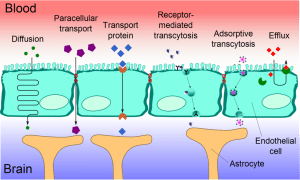Scientists breach the blood-brain barrier for the first time
A team of clinicians in Toronto has managed to non-invasively deliver chemotherapeutic drugs directly through the blood-brain barrier into a brain tumour.
It is faintly ironic that the most effective of the human body’s defences often themselves make the practise of medicine much more difficult. The best example of this is the blood-brain barrier; the brain’s very own security system. This barrier, as its name implies, enables a separation of brain and blood, and only a few select molecules are able to cross it.
It is exceptionally good at keeping harmful pathogens away from the brain, but this comes at a hefty price; it is very difficult to actually get any drugs into the brain without breaching this barrier, thereby opening the brain up to possible infection or haemorrhage.
Invasive techniques have been developed to open up this barrier, and efforts have been undertaken to minimise the risks of doing so. But scientists yearned for a non-invasive method, and now a team at Sunnybrook Health Services Centre in Toronto believe that they have successfully managed to administer chemotherapeutic drugs into the brain of a patient, completely non-invasively.
The method is a revision of an invasive technique developed last year, and this advancement has the potential to completely revolutionise the treatment of diseases affecting the nervous system.
First, the drugs are injected into the bloodstream of a patient, along with a group of miniature gas-filled bubbles, nown as microbubbles. It is thought that, though the mechanism is not fully understood, the microbubbles push up against the blood-brain barrier. Ultrasound radiation is then applied, and it looks as though the microbubbles vibrate and these oscillations create tiny, transient gaps in the barrier, allowing the passage of drugs. No need for any surgery, just a dose of radiation.
It should be noted that the clinicians emphasise that these findings are still very much preliminary; indeed, they are yet to even write a paper on the technique. This is because it has only been successful on one patient thus far, and is in the very early stages of phase 1 trials; it has a good few trials to go. But the clinicians are optimistic, and hope to have it upgraded to phase 2 trials shortly.
A separate group of researchers at Colombia University, New York, have recently been granted funding to begin looking at potential uses for this technology in the treatment of Alzheimer’s and Parkinson’s diseases, after their studies on mice and monkeys proved encouraging.
Neurodegenerative disorders, particularly those classified as dementia, are on the rise, and it is therefore vital that more research on possible treatments is carried out. Our indispensable blood-brain barrier must not be allowed to hinder these efforts.


Comments